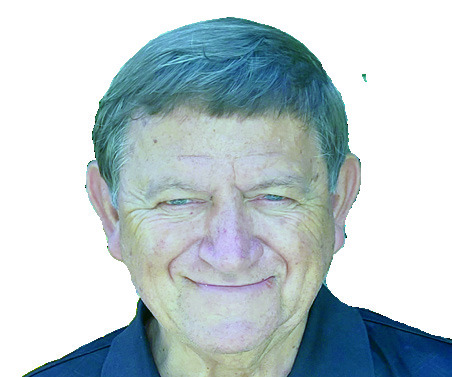Lynn Hilburn: The story of land in early America and early Missouri

Over the next few weeks and months, I am going to endeavour to tell the history of Southwest Missouri and Barry County.
I realize that Emory Melton and others have done an excellent job of laying out of the history and development of Barry County, but I would like to provide a summary what I think is interesting and important.
This will be fairly long It will be divided into several segments, but hopefully the people who like history will enjoy it. Also, I hope that the history teachers in our county will share this with their students.
Just for fun, the last editorial will include some questions, and the two individuals that get all of the questions correct will get a prize selected from the Barry County Historical and Genealogical Society. I grew up in Barry County and did not realize until I was much older that the Butterfield Stagecoach Line actually did not go through Butterfield but went right through downtown Cassville. I hope to bring this and other things to light for our history lovers and our young people.
We will talk about the movers and shakers that helped to develop Barry County and Cassville, about why some things are named what they are, about why some things are the size that they are and also about some of the historical people who spent a little time in Cassville. If you historians see any flaws in my stories and want to add or correct some items, please let me know.
We will start out with — Expansion, Settlement, and Governance.
The Revolutionary War marked the birth of a new nation. However, the victory over British rule also heralded the beginning of a new set of challenges for the fledgling United States.
Several of the states south of New York were eager to expand their boundaries westward all the way to the Louisiana Territory, which was, generally, the Mississippi River. They believed that American settlers were “destined” to expand westward across North America.
The most pressing issues were who owned the land, the control and governance of the vast territories to the west of the original thirteen colonies, and who would help control the Indians and provide safety and law for the settlers. One of the major problems was the lack of legal frameworks and regulations regarding land ownership, governance, and distribution.
Many states tried to claim their own portion of this vast land, but without armies the states had very little control over the Indians and the outlaws in the area. Without clear laws, disputes over land ownership were rampant.
Different states had conflicting claims, leading to confusion and conflict.
Additionally, there was no standardized system for surveying and dividing the land, making it difficult to establish clear boundaries and titles. To address these issues, the “Federal” government declared that the land belonged to the United States, and they introduced the Land Ordinance of 1785.
This landmark legislation aimed to create an organized and systematic approach to surveying and distributing land in the western territories. The ordinance ordered a survey of the lands to the west of the original states, intending to prevent disputes over boundaries and ownership. Under the Ordinance, the surveyed land was divided into townships, each measuring six miles square.
These townships were further subdivided into 36 sections, with each section being one mile square, or 640 acres, and parcels of land could more easily be divided up into 160 acre, 80 acre or 40 acre tracts.
This methodical division allowed for clear and precise boundaries, making it easier to sell and settle the land. Note, Section 16 of each township was set aside to support public schools, highlighting the government’s commitment to education in the new territories. More fun stuff about schools in a later segment.
Prior to the mid 1700s, settlers and families were offered land (usually 40 acres) at no cost, just to get people to start occupying the land.
This was done in order to show other countries that the United States had more claim to the land than the French, British or any other foreign empire builder.
After the land had been surveyed, the United States sold the land at approximately a dollar and acre to discourage people and companies from trying to claim large sections of land.
As the nation continued to expand, the federal government recognized the need for a more comprehensive framework to guide the process of creating new states from the western territories. This led to the passage of the Northwest Ordinance in 1787, which established the procedures for territories to achieve statehood.
In our next segment, I will discuss how the Land Ordinance of 1785 and the Northwest Ordinance affected the development of the area known as Missouri. I will also talk about the influence that several Indian tribes had in the development of Missouri, the history of Missouri and on the naming of things in Missouri. Note that we are still a few hundred words away from talking about the first white man showing up in southwest Missouri Barry County.
Lynn Hilburn is an officer in the Barry County Genealogical and Historical Society, and invites all to come and join meetings, to provide information about their families or to look up information about their families. Hilburn may be reached at [email protected].







